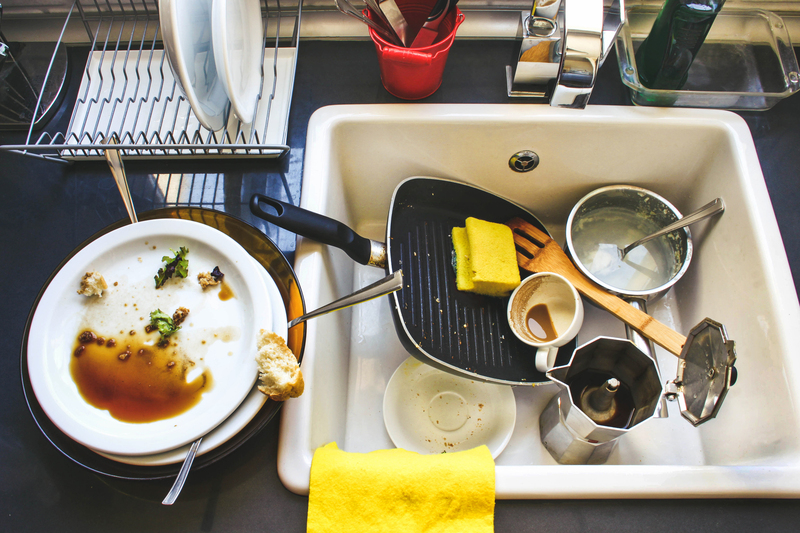Piano Moving 101: Essential Advice from Seasoned Professionals
Posted on 21/05/2025
Piano Moving 101: Essential Advice from Seasoned Professionals
Moving a piano is no small feat. With their immense weight, delicate internal structure, and financial - as well as sentimental - value, pianos require an expert touch. Whether you're relocating across town or just rearranging your living space, successfully moving a piano demands planning, the right equipment, and valuable insights from seasoned professionals. In this comprehensive guide, you'll find everything you need to know about piano relocation, including essential tips, common mistakes to avoid, and expert advice to ensure your instrument arrives safe and sound.

Understanding the Complexity of Piano Moving
Pianos are not only heavy -- weighing anywhere from 300 to 1,200 pounds -- but they are also structurally fragile. Components such as the soundboard, keys, and pedals can suffer damage if not handled with care. Furthermore, the intricate balance and alignment inside your piano can be upset by incorrect handling, potentially resulting in costly repairs or tuning issues.
Why Is Moving a Piano So Challenging?
- Weight Distribution: Pianos have uneven weight distribution, making them awkward and unstable to lift.
- Size and Shape: Grand pianos have wide frames, while upright pianos are top-heavy, complicating maneuvering through doorways and staircases.
- Fragile Components: Internal strings, hammers, and soundboards are sensitive to shock and jostling.
- Finish: The exterior is susceptible to scratches, dents, and chips during transit.
Types of Pianos and Their Moving Challenges
Before planning a piano move, it's crucial to know what type you have. Each style presents unique challenges:
Upright Pianos
These vertical pianos are relatively compact but can weigh up to 800 pounds. Their height and top-heaviness make them prone to tipping.
Grand and Baby Grand Pianos
Ranging from petite babies to concert grands stretching over 9 feet, these instruments are wide, heavy, and require partial dismantling for safe relocation.
Digital Pianos
Lighter and less fragile, digital pianos are the easiest to move but still demand cautious handling.
Preparations Before Moving Your Piano
Preparation is the cornerstone of a successful piano move. Here's how professional piano movers get ready for the big day:
- Assess the Area - Measure hallways, doors, and staircases.
- Clear the Path - Remove rugs, furniture, and obstacles for unobstructed movement.
- Gather the Right Equipment - You'll need moving blankets, heavy-duty straps, a piano dolly, and protective gear.
- Assemble a Team - Never attempt to move a piano solo; enlist at least three strong helpers.
- Check for Professional Help - If unsure, hiring an experienced piano mover is often safest and most cost-effective in the long run.
The Best Equipment for Moving Pianos Safely
The correct equipment not only simplifies the task but also protects both the piano and your property. Here's what professionals never go without:
- Piano Dolly: Specifically engineered to support the massive weight and balance.
- Moving Blankets: Wrap your instrument to safeguard its finish and components.
- Straps and Harnesses: Secure the piano during lifting and transport, preventing shifting and falls.
- Screwdrivers and Tools: For partial disassembly, especially with grand pianos.
- Stair Ramps: Essential when negotiating steps or elevated landings.
A Quick Note on Packing Materials
Using high-quality packing materials can mean the difference between an uneventful move and costly damage. Look for thick, padded moving blankets, stretch wrap for extra security, and corner protectors for added insurance.
Step-by-Step: How to Move a Piano Like a Professional
Ready to begin? Here's a step-by-step piano moving guide used by experts for local and long-distance moves:
1. Measure and Plan
- Get exact dimensions of your piano and all passageways.
- Identify tight spots, sharp turns, stairs, and low clearances that could pose problems.
2. Prep the Piano
- Close and lock the keyboard lid to protect the keys.
- Wrap the entire instrument in moving blankets, securing with tape or straps (avoid taping the surface).
- For grand pianos, remove and safely wrap the legs, pedals, and lyre. Label all parts for easy reassembly.
3. Secure and Lift
- Position the dolly or skidboard next to the piano.
- With even lifting on all sides, carefully transfer the piano onto the dolly. Always lift with your legs, not your back.
- Never pivot or drag the instrument, as this can damage both the piano and your floors.
4. Maneuver Through Obstacles
- Move slowly and communicate constantly with your team.
- Use stair ramps if needed, keeping the instrument level at all times.
- Be cautious of low ceilings, door frames, and corners.
5. Load and Transport
- Load the piano into the moving vehicle using a sturdy ramp.
- Secure the piano to anchor points in the truck or van with heavy-duty straps.
- Place padding between the piano and any hard surfaces or other items.
6. Unload and Set Up
- Reverse the process at your new location, using ramps and teams for unloading.
- Reassemble any removed parts and carefully unwrap the piano.
- Place the piano in its new spot, away from direct sunlight, vents, and humidity.
Top Mistakes to Avoid When Moving a Piano
Even minor missteps can spell disaster when moving such a complex instrument. Here's what expert piano movers warn against:
- Underestimating the Weight: Improper lifting can lead to serious injury and damaged instruments.
- Skipping the Wrap: Exposed surfaces are at risk for chips, scratches, and dents.
- Improper Disassembly: Forcing legs or pedals can crack wood or break mechanical parts.
- Ignoring Climate Control: Sudden temperature or humidity changes can warp the soundboard and finish.
- Not securing the piano in the vehicle can lead to catastrophic falls in transit.
Frequently Asked Questions About Piano Moving
Can you move a piano without professionals?
While it's possible for several strong individuals to move a piano short distances, professional piano moving companies are recommended for safety and protection, especially with stairs, narrow spaces, or expensive instruments.
How much does professional piano moving cost?
Rates vary depending on distance, type of piano, obstacles (like stairs), and location, but nationwide the average price ranges from $150 to $1,000, with grand pianos at the higher end.
Will my piano need tuning after a move?
Most pianos will require tuning after relocation, as movement and climate changes affect internal components. Wait 2-3 weeks to let your instrument acclimate before scheduling a tuning.
Is piano moving covered by insurance?
Not always! Check with both your homeowners insurance and your moving company to ensure your piano is fully protected during transit.
Insider Tips for a Smooth Piano Move
- Don't rush! Allocate plenty of time and take breaks as needed.
- Wear gloves with good grip to avoid dropping or scratching the instrument.
- If moving over hardwood or tile, use protective sheets to prevent floor damage.
- Document your piano's condition with photos before the move for insurance purposes.
- Always keep your piano upright and never lay it flat unless dismantled by an expert.
The Benefits of Hiring Professional Piano Movers
Professional piano moving services bring expertise, specialized tools, and peace of mind. Here's why trusting the pros often saves money and headaches in the long run:
- Experience: Seasoned movers know how to handle all types of pianos and unexpected challenges.
- Insurance: Most piano movers are fully insured, protecting your valuable asset during transit.
- Efficient Process: Professionals can move even the largest pianos safely and quickly, minimizing downtime.
Post-Move Piano Care
Once your piano is settled in its new location, some aftercare is vital to help your instrument thrive:
- Let the piano acclimate before tuning or playing extensively.
- Maintain stable temperature and humidity to prevent damage.
- Schedule a professional tuning and inspection within a few weeks of your move.
Warning Signs of Piano Damage After a Move
- Sticky, uneven, or unresponsive keys
- Buzzing, rattling, or changes in sound quality
- Visible chips, cracks, or warped wood
- Loose or wobbly legs and pedals

Conclusion: Making Piano Moving Safe and Simple
Moving a piano is a major undertaking, but with meticulous preparation, the right equipment, and proven advice from professional piano movers, you can protect your cherished instrument and enjoy music in your new space. Always prioritize safety, recruit plenty of help, and don't hesitate to call seasoned professionals if the task feels overwhelming. With the best practices outlined here, your next piano relocation will be a resounding success!
Ready for Your Next Move?
If you're preparing for a piano move or want to ensure your valuable instrument is treated with the utmost care, get in touch with a trusted local piano moving company. With experience, dedication, and the right tools, your piano will make the journey flawlessly, music and memories intact.





